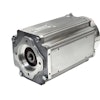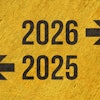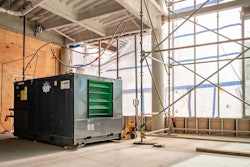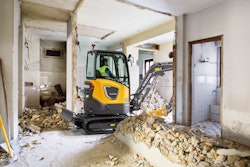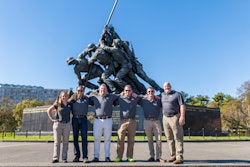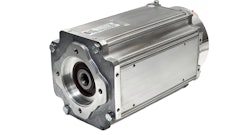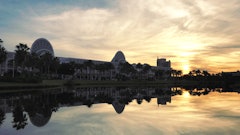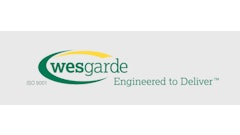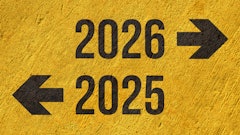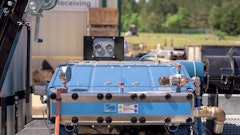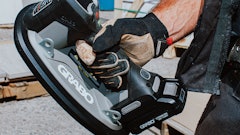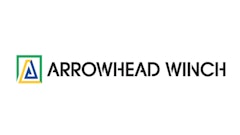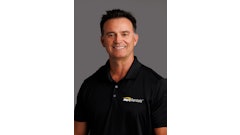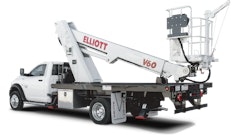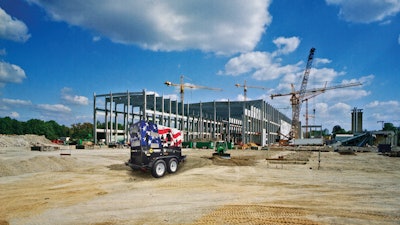
**Content sponsored by Sunbelt Rentals
Over 20 million square feet of data center construction is expected to take place in the U.S. by 2027. It’s a swell driven by growth in the internet-connected appliances in homes, 5G networks, streaming demand tied to COVID-19, and a shift to remote work. More often than not, people are working, playing, and shopping in the cloud.
With the cloudification of our world, the scale of data centers that make up the cloud has grown. Data centers ranging from 10,000 square feet to over 1 million square feet — known as hyperscale data centers — support the needs of companies such as Google and Amazon.
From grading and trenching to power solutions and OSHA compliance, Sunbelt Rentals can assist you in rightsizing your equipment to keep data center builds on schedule and on budget. Use our planning checklist to think through your next data center construction project, whether it’s a hyperscale build or something smaller.
1. What’s the Task?
Identify what you’re trying to achieve and then work backward to figure out which piece of equipment can best handle the job. Data center construction typically includes grading, trenching, and pouring concrete. Building construction and shoring needs should be on your list, as well as safety and compliance. Does the worksite have a utility connection, or will you need generators to power everything that supports construction, from offices and cafeterias to guard shacks and parking lots? Make a list of every task that’s part of your project and then determine the machinery and accessories you need to tackle each one.
2. How Large Is Your Workforce?
Cross-reference the tasks you need to complete with the projected start date and budget to rough out a schedule. Next, consider the amount of time and manpower available for each job to determine the machines you’ll need and what each must be capable of doing.
For example, smaller pieces of equipment may not be powerful enough for heavy digging or loading or as efficient as larger machines when moving massive volumes of material. But the workforce available also makes a difference in how quickly you can finish a job.
3. What Are the Jobsite Conditions?
To determine proper sizing, you need to evaluate what will be under your equipment everywhere it will be used. For instance, the large bulldozer you’d like to use may roll over rock just fine but will get mired in mud. If you want to use equipment inside a building, you’ll also need to know what weight the structure is rated to handle. If keeping the floor pristine is critical, you may need to use machines with nonmarking tires or bring in floor protection.
4. What Are the Space Constraints?
You’ll need room to move and maneuver both inside and outside of your structure. Depending on the configuration, you may be limited to using small equipment, even if you prefer larger machines. If you need powerful equipment for inside work, make sure the building has an opening sufficient to accommodate even the largest machines. Also, determine where to park equipment to perform every project task and how close to the facility you can get. Sunbelt Rentals can help you set up a secure on-site tool yard that simplifies inventory management with subcontractors.
5. How Will You Transport Equipment?
Confirm in advance how the equipment will get on and off the jobsite safely, without getting tangled in overhead power lines or stuck under low bridges. Decide how you plan to tow or transport machinery, and make sure you’re in compliance with local hauling restrictions. If you need a tractor trailer, check the route and weight constraints to see if it can use public roadways to get to your jobsite. For projects in urban areas, check to see if your preferred type of equipment and mode of transportation is possible in narrow alleys and winding streets.
6. What Are Your Equipment Maintenance Needs?
Is it a multimonth or multiyear project? Consider the anticipated weather conditions and whether crews will work extended or standard shifts to better understand the maintenance needs of the equipment. Sunbelt Rentals offers turnkey maintenance, fueling, and telematic data services to help your worksite run efficiently.
7. What Will It Cost?
You need to consider operating costs for each piece of equipment as well as the price to rent it. You will pay more for large equipment than for small machines. The operating costs for large equipment will be higher as well, especially for fuel. Still, you may be able to complete projects more quickly and pay less overall with more robust machines. So, balance cost with the additional time and people that using smaller equipment may require.
8. Does the Project Have Sustainability Goals?
Is the data center being constructed in adherence with a sustainable building program, such as LEED, or the Leadership in Energy and Environmental Design, rating system? Has the property owner prioritized sustainability from construction to operation of the data center? Many of Sunbelt Rentals’ machines are fuel efficient or electric, with smart power management solutions to conserve fuel.
Sunbelt Rentals’ Green Equipment Includes:
- Battery energy storage systems
- Bobcat All-Electric Compact Track Loader
- EV charging stations
- Electric concrete grinder
- Electric manlift
- Electric scissor lift
- Electric telehandler
- Electric tools
- Solar light tower
Sunbelt Rentals offers hundreds of types of high-quality machines to support data center construction, so you don’t have to contact multiple companies to rightsize all the equipment needed for your project. Plus, we have the technical expertise to help you choose the perfect machine for every task, and we offer set-up support to show your workers how to safely use the equipment. Contact Sunbelt Rentals for help with your next data center project.
